(AP) — Cool weather helped fire crews gain ground Thursday against the nation’s deadliest wildfire in a century, as the search went on for more bodies. At least 59 people were killed and 300 were unaccounted for a week after the flames swept through.
Smoke masks. Eye drops. No outdoor exercise. This is how Californians are trying to cope with wildfires choking the state, but experts say an increase in serious health problems may be almost inevitable for vulnerable residents as the disasters become more commonplace.
Research suggests children, the elderly and those with existing health problems are most at risk.
Short-term exposure to wildfire smoke can worsen existing asthma and lung disease, leading to emergency room treatment or hospitalization, studies have shown.
Increases in doctor visits or hospital treatment for respiratory infections, bronchitis and pneumonia in otherwise healthy people also have been found during and after wildfires.
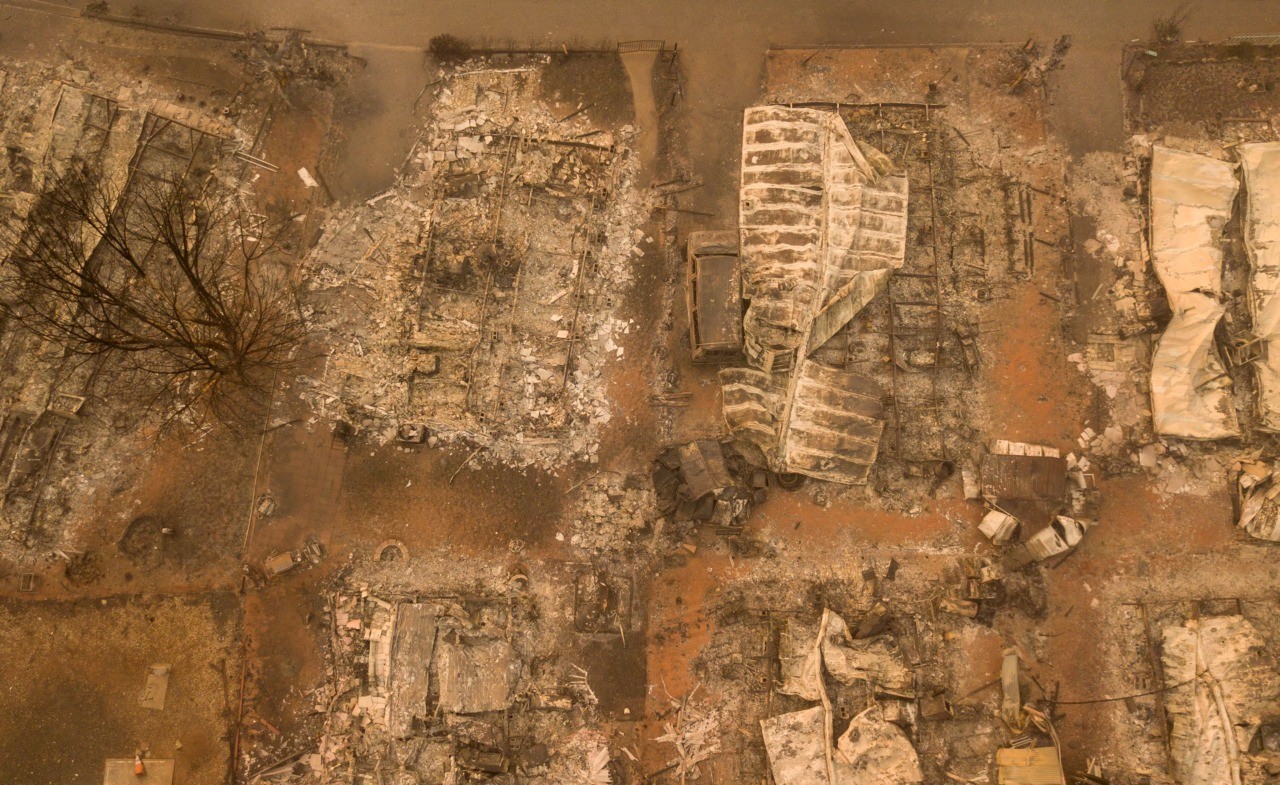
In this aerial photo, a burned neighborhood is seen in Paradise, California on November 15, 2018. – The toll in the deadliest wildfires in recent California history climbed to 59 on November 14, 2018, as authorities released a list of 130 people still missing. (Photo by Josh Edelson / AFP) (Photo credit should read JOSH EDELSON/AFP/Getty Images)
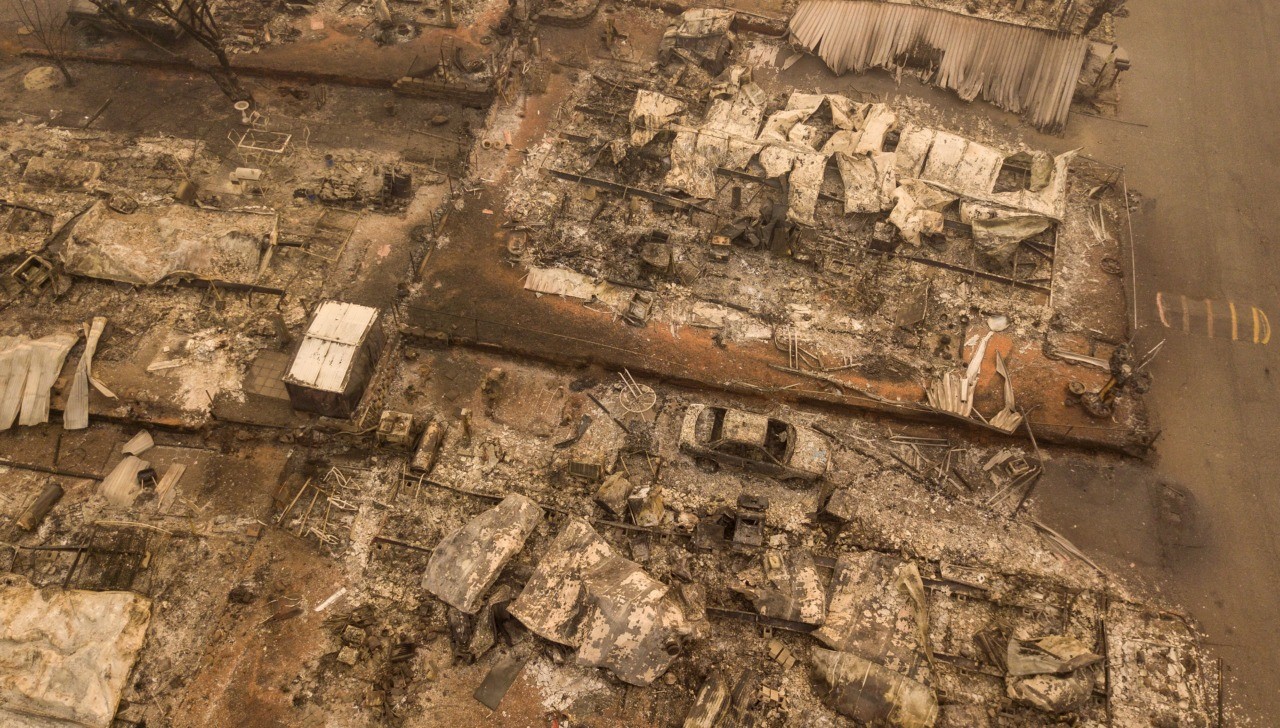
In this aerial photo, a burned neighborhood is seen in Paradise, California on November 15, 2018. – The toll in the deadliest wildfires in recent California history climbed to 59 on November 14, 2018, as authorities released a list of 130 people still missing. (Photo by Josh Edelson / AFP) (Photo credit should read JOSH EDELSON/AFP/Getty Images)
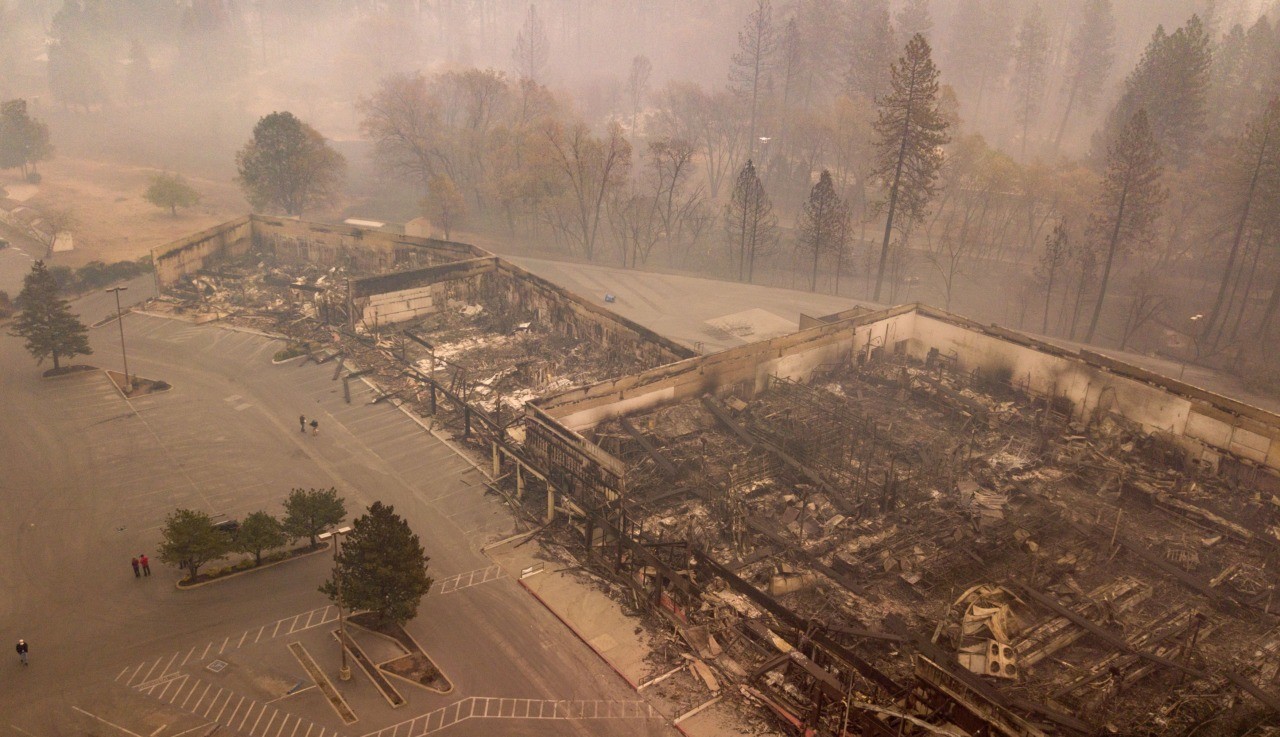
In this aerial photo, a burned neighborhood is seen in Paradise, California on November 15, 2018. – The toll in the deadliest wildfires in recent California history climbed to 59 on November 14, 2018, as authorities released a list of 130 people still missing. (Photo by Josh Edelson / AFP) (Photo credit should read JOSH EDELSON/AFP/Getty Images)

In this aerial photo, a burned neighborhood is seen in Paradise, California on November 15, 2018. – The toll in the deadliest wildfires in recent California history climbed to 59 on November 14, 2018, as authorities released a list of 130 people still missing. (Photo by Josh Edelson / AFP) (Photo credit should read JOSH EDELSON/AFP/Getty Images)

PARADISE, CA – NOVEMBER 15: An aerial view of a shopping center destroyed by the Camp Fire on November 15, 2018 in Paradise, California. Fueled by high winds and low humidity the Camp Fire ripped through the town of Paradise charring over 140,000 acres, killing at least 56 people and destroying over 8,500 homes and businesses. The fire is currently at 40 percent containment. (Photo by Justin Sullivan/Getty Images)
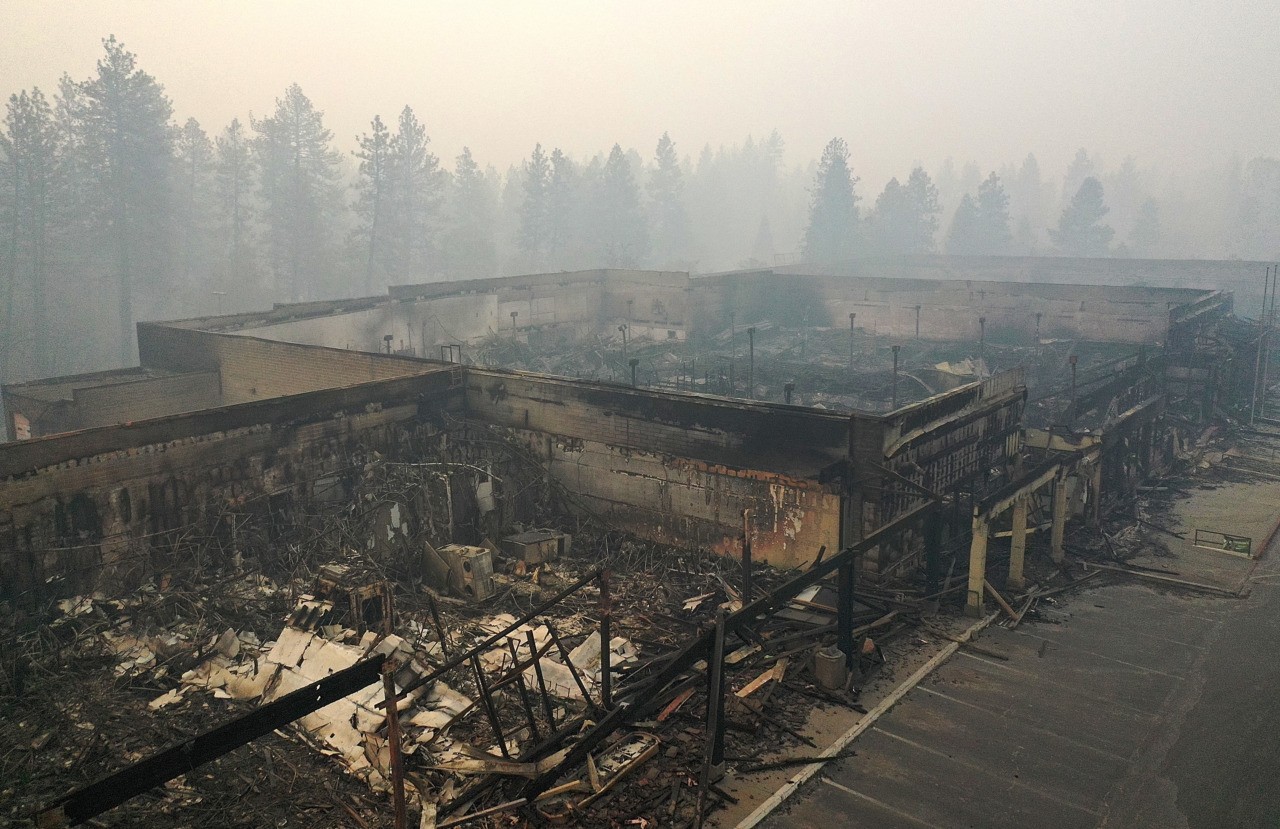
PARADISE, CA – NOVEMBER 15: An aerial view of a shopping center destroyed by the Camp Fire on November 15, 2018 in Paradise, California. Fueled by high winds and low humidity the Camp Fire ripped through the town of Paradise charring over 140,000 acres, killing at least 56 people and destroying over 8,500 homes and businesses. The fire is currently at 40 percent containment. (Photo by Justin Sullivan/Getty Images)

PARADISE, CA – NOVEMBER 15: An aerial view of a neighborhood destroyed by the Camp Fire on November 15, 2018 in Paradise, California. Fueled by high winds and low humidity the Camp Fire ripped through the town of Paradise charring over 140,000 acres, killing at least 56 people and destroying over 8,500 homes and businesses. The fire is currently at 40 percent containment. (Photo by Justin Sullivan/Getty Images)
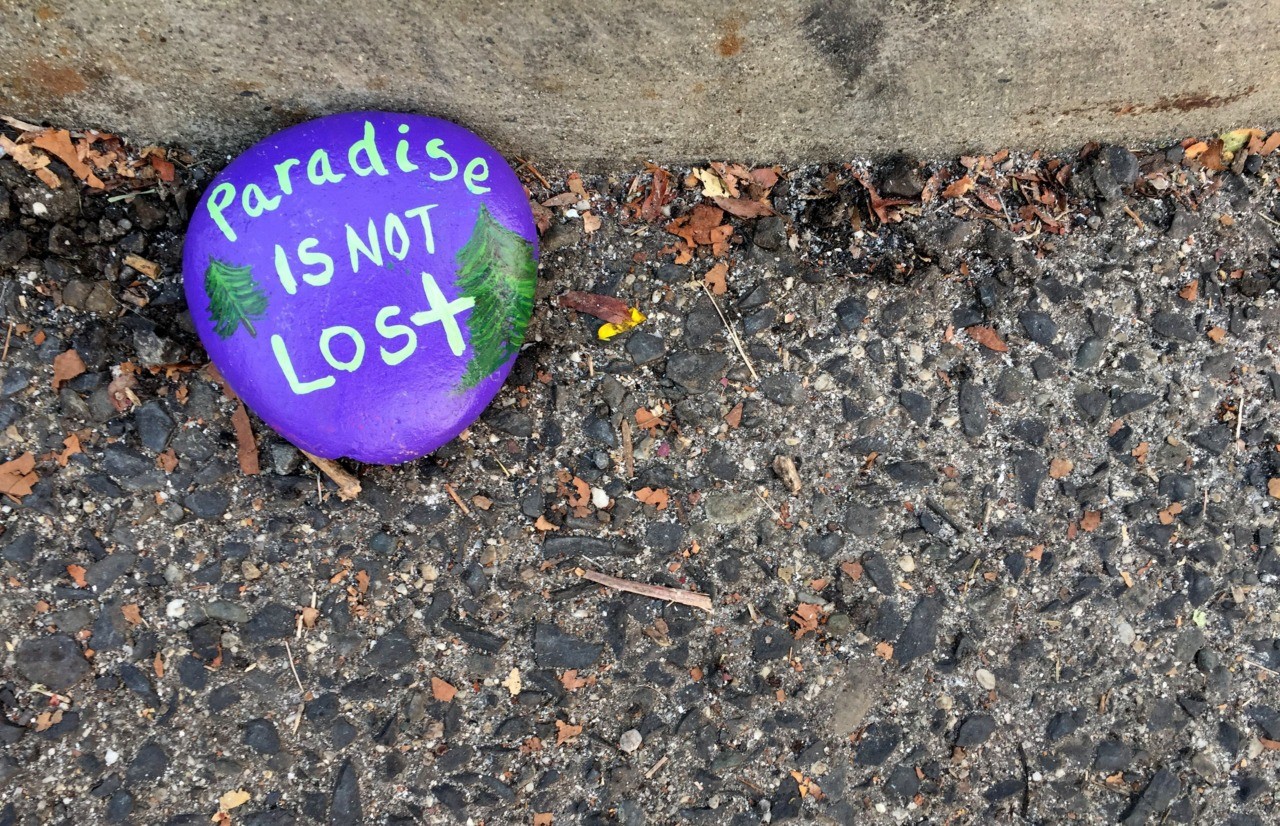
A pebble is seen at a donation fair for fire evacuees camping at a parking lot in Chico, California, on November 14, 2018. – Firefighters backed by air tankers and helicopters battled California’s raging wildfires for a seventh day on Wednesday as the authorities in the worst-hit county released a list of over 100 missing people. At least 51 deaths have been reported so far from the deadliest wildfires in California’s recent history and body recovery teams were going house-to-house with cadaver dogs in Paradise. (Photo by Javier TOVAR / AFP) (Photo credit should read JAVIER TOVAR/AFP/Getty Images)

Volunteers cook at a donation fair for fire evacuees camping at a parking lot in Chico, California, on November 14, 2018. – Firefighters backed by air tankers and helicopters battled California’s raging wildfires for a seventh day on Wednesday as the authorities in the worst-hit county released a list of over 100 missing people. At least 51 deaths have been reported so far from the deadliest wildfires in California’s recent history and body recovery teams were going house-to-house with cadaver dogs in Paradise. (Photo by Javier TOVAR / AFP) (Photo credit should read JAVIER TOVAR/AFP/Getty Images)

Volunteer Cathryn Flores classifies clothes at a donation fair for fire evacuees camping at a parking lot in Chico, California, on November 14, 2018. – Firefighters backed by air tankers and helicopters battled California’s raging wildfires for a seventh day on Wednesday as the authorities in the worst-hit county released a list of over 100 missing people. At least 51 deaths have been reported so far from the deadliest wildfires in California’s recent history and body recovery teams were going house-to-house with cadaver dogs in Paradise. (Photo by Javier TOVAR / AFP) (Photo credit should read JAVIER TOVAR/AFP/Getty Images)
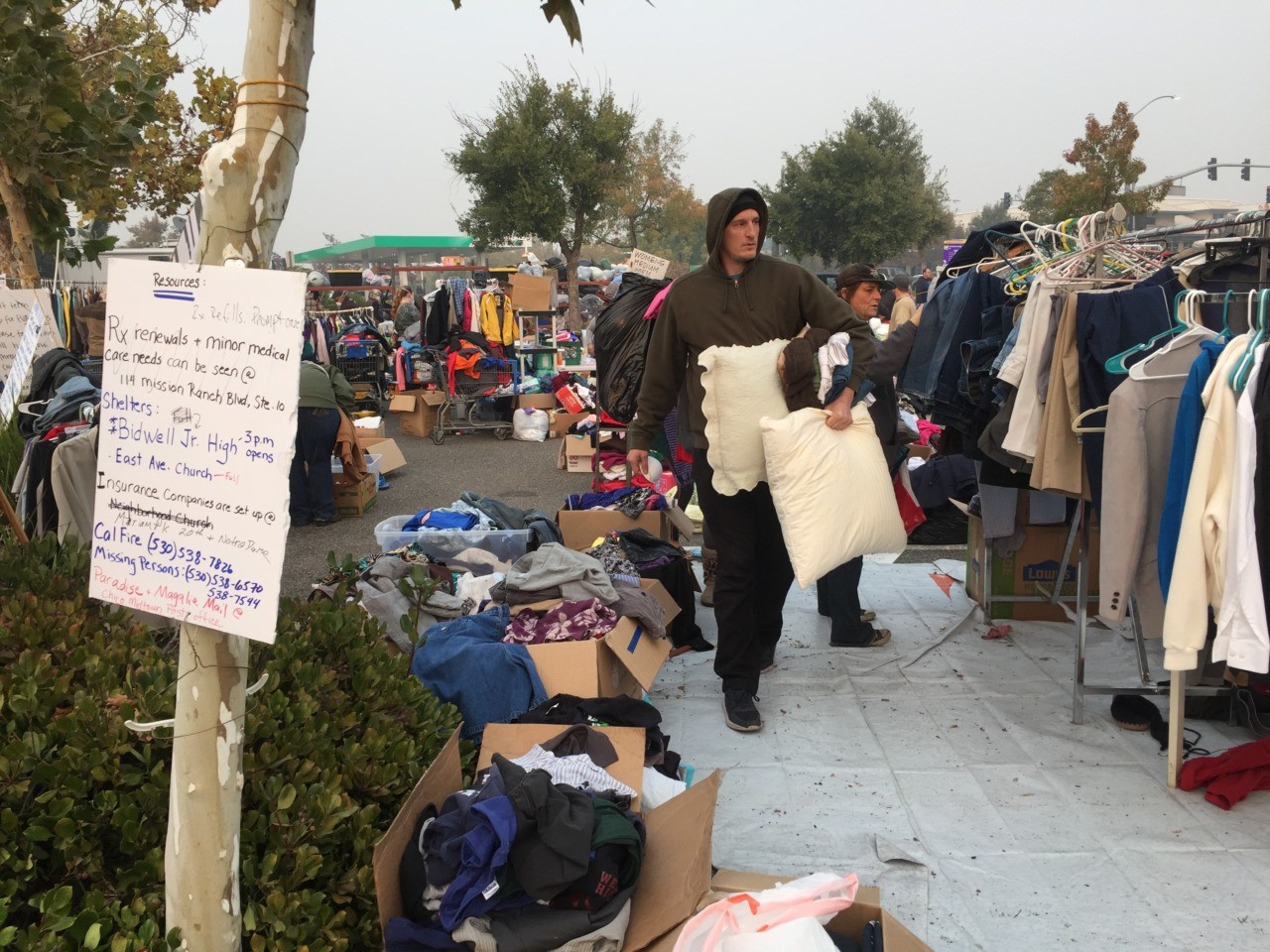
People are seen at a donation fair for fire evacuees camping at a parking lot in Chico, California, on November 14, 2018. – Firefighters backed by air tankers and helicopters battled California’s raging wildfires for a seventh day on Wednesday as the authorities in the worst-hit county released a list of over 100 missing people. At least 51 deaths have been reported so far from the deadliest wildfires in California’s recent history and body recovery teams were going house-to-house with cadaver dogs in Paradise. (Photo by Javier TOVAR / AFP) (Photo credit should read JAVIER TOVAR/AFP/Getty Images)
Some studies also have found increases in ER visits for heart attacks and strokes in people with existing heart disease on heavy smoke days during previous California wildfires, echoing research on potential risks from urban air pollution.
For most healthy people, exposure to wildfire smoke is just an annoyance, causing burning eyes, scratchy throats or chest discomfort that all disappear when the smoke clears.
But doctors, scientists and public health officials are concerned that the changing face of wildfires will pose a much broader health hazard,
“Wildfire season used to be June to late September. Now it seems to be happening all year round. We need to be adapting to that,” Dr. Wayne Cascio, a U.S. Environmental Protection Agency cardiologist, said this week.
In an overview published earlier this year, Cascio wrote that the increasing frequency of large wildland fires, urban expansion into wooded areas and an aging population are all increasing the number of people at risk for health problems from fires.
Wood smoke contains some of the same toxic chemicals as urban air pollution, along with tiny particles of vapor and soot 30 times thinner than a human hair. These can infiltrate the bloodstream, potentially causing inflammation and blood vessel damage even in healthy people, research on urban air pollution has shown. Studies have linked heart attacks and cancer with long-term exposure to air pollution.
Whether exposure to wildfire smoke carries the same risks is uncertain, and determining harm from smog versus wildfire smoke can be tricky, especially with wind-swept California wildfires spreading thick smoke hundreds of miles away into smoggy big cities.
“That is the big question,” said Dr. John Balmes, a University of California, San Francisco, professor of medicine who studies air pollution.
“Very little is known about the long-term effects of wildfire smoke because it’s hard to study populations years after a wildfire,” Balmes said.
Decreased lung function has been found in healthy firefighters during fire season. They tend to recover but federal legislation signed this year will establish a U.S. registry tracking firefighters and potential risks for various cancers, including lung cancer. Some previous studies suggested a risk.
Balmes noted that increased lung cancer rates have been found in women in developing countries who spend every day cooking over wood fires.
That kind of extreme exposure doesn’t typically happen with wildfires, but experts worry about the kinds of health damage that may emerge for firefighters and residents with these blazes occurring so often.
Whether that includes more cancer is unknown. “We’re concerned about that,” Balmes said.
Regular folks breathing in all that smoke worry about the risks too.
Smoke from the fire that decimated the Northern California city of Paradise darkened skies this week in San Francisco, nearly 200 miles southwest, and the air smelled “like you were camping,” said Michael Northover, a contractor.
He and his 14-year-old son have first-time sinus infections that Northover blames on the smoke.
“We’re all kind of feeling it,” Northover said.
Classes were canceled Thursday in at least six universities in Northern California as smoke from the fire continued to blanket all nine counties of the Bay Area. Some were closing all buildings but others, including Cal State East Bay said libraries, health centers and dining halls would stay open.
At Chico State University, 11 miles from Paradise, ash was falling this week and classes were canceled until after Thanksgiving.
“It’s kind of freaky to see your whole town wearing air masks and trying to get out of smoke,” said freshman Mason West, 18. “You can see the particles. Obviously it’s probably not good to be breathing that stuff in.”
West returned home this week to Santa Rosa, hard hit by last year’s wine country fire, only to find it shrouded in smoke from the Paradise fire 100 miles away. West’s family had to evacuate last year for a week but their home was spared.
“It’s as bad here as it was in Chico,” West said. “It almost feels like you just can’t get away from it.”
Smoke has been so thick in Santa Rosa that researchers postponed a door-to-door survey there for a study of health effects of last year’s fire.
“We didn’t feel we could justify our volunteer interns going knocking on doors when all the air quality alerts were saying stay indoors,” said Irva Hertz-Picciotto, a public health researcher at the University of California, Davis. The study includes an online survey of households affected by last year’s fire, with responses from about 6,000 people so far.
Preliminary data show widespread respiratory problems, eye irritations, anxiety, depression and sleep problems around the time of the fire and months later.
“Conventional thinking is that these effects related to fires are transient. It’s not entirely clear that’s the case,” Hertz-Picciotto said.
Researchers also will be analyzing cord blood and placentas collected from a few dozen women who were pregnant during the fire, seeking evidence of stress markers or exposure to smoke chemicals.
They hope to continue the study for years, seeking evidence of long-term physical and emotional harms to fire evacuees and their children.
Other studies have linked emotional stress in pregnant women to developmental problems in their children and “this was quite a stress,” Hertz-Picciotto said.
It’s a kind of stress that many people need to prepare for as the climate warms and wildfires proliferate, she said.
“Any of us could wake up tomorrow and lose everything we own,” she said. “It’s pretty scary.”
___
Online:
Follow AP Medical Writer Lindsey Tanner at @LindseyTanner. Her work can be found here .
___
The Associated Press Health & Science Department receives support from the Howard Hughes Medical Institute’s Department of Science Education. The AP is solely responsible for all content.
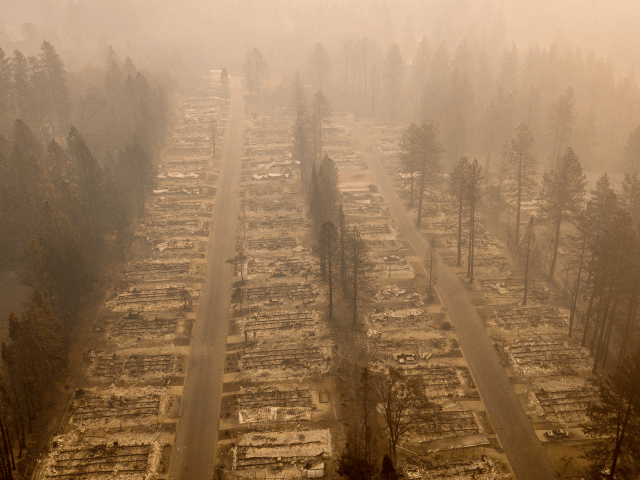
COMMENTS
Please let us know if you're having issues with commenting.